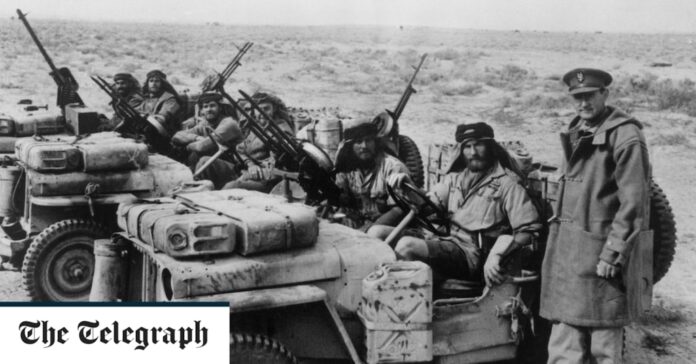The original SAS Rogue Hero blew up planes, parachuted without a helmet and found Colditz ‘marvellous’. Was there anything he couldn’t do?
Lieutenant-Colonel David Stirling was “quite, quite mad”. At least, that was the assessment of Field Marshal Bernard Montgomery. Indeed, while bored in Cairo during the Second World War, Stirling had jumped out of an aeroplane without proper training (or a helmet), tore his parachute on the tail, and hit the ground at such speed he was temporarily blinded and paralysed. Soon after, still on crutches, he sneaked into British Middle East HQ (“I had to use my crutches as a kind of ladder to get over the wire when the guards weren’t looking,” Stirling recalled). This one-man mission was carried out for good reason: to evade not only the guards, but also the British army’s bloated administration, and put a proposal directly into the hands of the generals – the proposal that ultimately founded the SAS.
Stirling became commander of the original SAS, which carried out sabotage missions that destroyed scores of enemy aircraft, as well as fuel tankers, trucks, communications, and anything else to support larger operations in North Africa and disrupt enemy supply lines.
The legend of Stirling’s SAS is the stuff of swashbuckling adventure – daring, not-for-the-faint-hearted raids achieved with swagger, bravado, and straight-up blagging their way through enemy checkpoints. British tabloids would give Stirling the nickname “the Phantom Major”. Captured in January 1943, Stirling spent the remainder of the war escaping POW camps and was finally sent to Colditz. His story, and the formation of the SAS, is told in the BBC’s new series, SAS Rogue Heroes, from Peaky Blinders creator Stephen Knight.
In the book that inspired the series, author Ben Macintyre described Stirling as “one of those people who thrive in war, having failed at peace”. From a clan of eccentric Scottish aristocrats, Stirling had tried his hand at various pursuits. He moved to Paris in an attempt to become an artist, then pledged to be the first man to climb to the top of Mount Everest – despite zero climbing know-how, or the number of actual climbers who had perished up there. Heading to America, he was working as a cowboy – a humble ranch hand – when war broke out.


